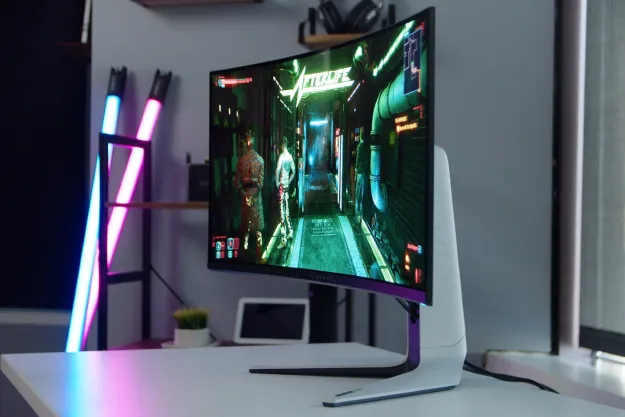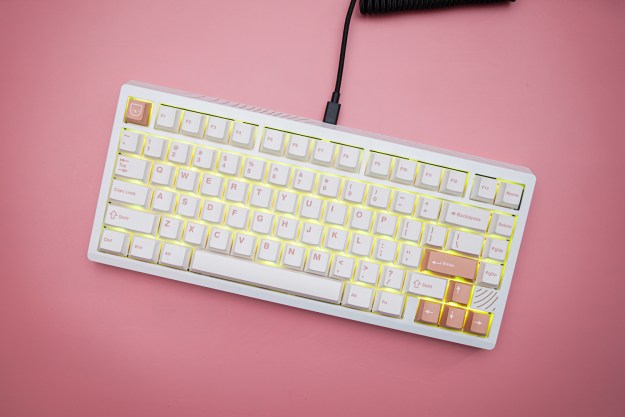There are a ton of exciting monitors launching in 2024, and we already have a first taste of them. Following a string of announcements at the beginning of the year, we know about monitors coming from LG, Asus, Acer, MSI, and more, all of which are slated to launch soon.
We’re still waiting on pricing and release details for most of these displays, but they’re going to release at some point in 2024. Here are the monitors we’re most looking forward to this year.
Asus ROG Swift OLED PS27AQDP
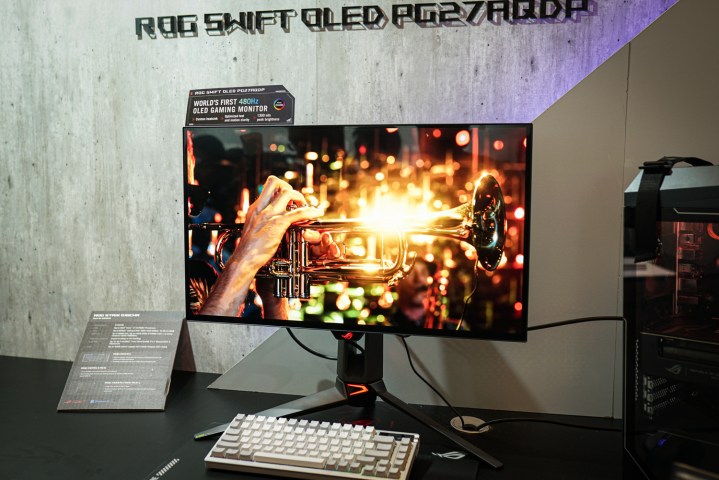
We’re seeing a slate of new OLED gaming
On top of the searing refresh rate, Asus claims the monitor can hit 1,300 nits of peak brightness. That’s the highest brightness claim we’ve seen from an OLED monitor — by far — and it would be a great step toward changing the narrative around the brightness of OLED displays.
It seems Asus has some sort of exclusivity on the display as well. The monitor uses an LG Display OLED panel — that’s WOLED — and we haven’t seen another brand leveraging the same panel yet. This one is still a few months out, according to Asus, and it will likely cost a pretty penny. But as far as
LG UltraGear 32GS95UE
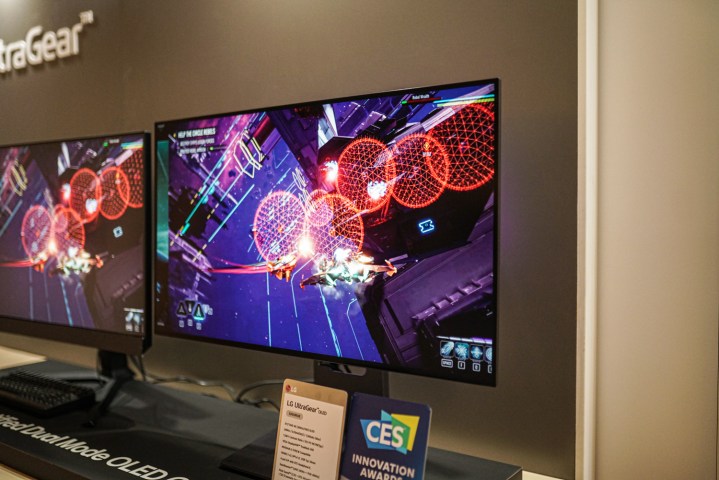
The ROG Swift OLED PS27AQDP may be the first 480Hz OLED we’re seeing with a 1440p resolution, but the LG UltraGear 32GS95UE can hit that refresh rate, too. This is a 32-inch OLED monitor that tops out at a
If you need the resolution, you can run the monitor in its native mode. There, you get the full
It’s like having two
HP Omen Transcend 32

HP isn’t known for high-end gaming
The Omen Transcend 32 supports up to 140 watts over the USB-C connection. That’s huge, and it’s a feature we don’t see often enough in gaming
Power delivery over USB-C is the standout feature here, but it’s important to remember that this is still a
MSI MEG 321URX
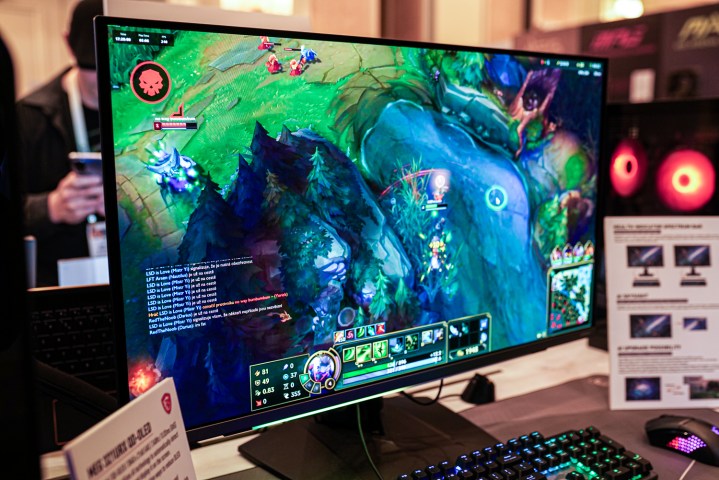
The MSI MEG 321URX is similar to the other
It’s a two-part system. First, there’s a light bar that runs under the front lip of the display. Currently, this uses AI to detect your health in League of Legends, so you’ll see the light slowly drain as your health runs out. Nifty! The more game-breaking application of AI comes with enemy markers, though. The AI processor will track and alert the player of enemy positions off-screen, helping you either track down an enemy or escape to safety.
Although you’re technically not running a cheat, it’s pretty darn close to one. We’ll have to wait and see if it becomes a problem in League of Legends, but MSI is already pushing ahead. The company tells me it plans to train the AI on other competitive titles and to the AI processor to display helpful information on-screen. We won’t have to wait long to see this display in action, either. MSI says it launches in February for $1,200.
Asus ZenScreen Fold OLED MQ17QH
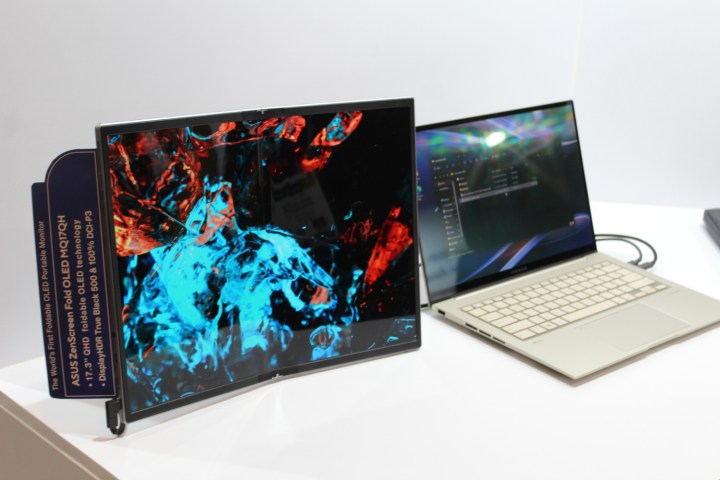
We’ve seen OLED
There are plenty of portable
As for actually setting up the monitor, Asus includes a hefty kickstand that’s built into the display, which lets you set it up either vertically or horizontally. The display also comes with a tripod mount built in, letting you either set it up on a tripod or on Asus’ own ZenScreen Stand.
Acer Predator SpatialLabs View 27
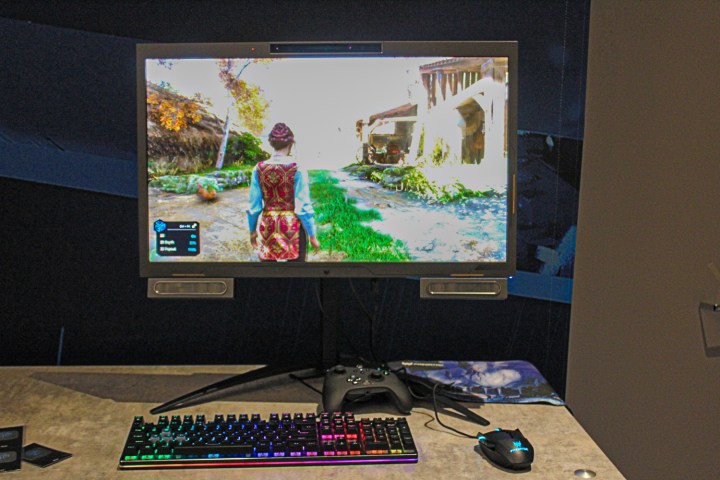
Attempts at glasses-free 3D
Unlike most glasses-free 3D
We’re looking forward to this display because it’s an impressive demonstration of tech that’s been around for years, but it’s definitely not the screen for everyone. Acer says it’s launching in the first half of this year, but at $2,000, making it’s a tough sell for such niche tech.
Editors' Recommendations
- The simple reasons HDR looks terrible on your PC
- Intel Core i9 CPUs are about to get hit with a downgrade, report says
- Razer’s most boring product is also one of its best
- As a lifelong PC gamer, these are the apps I couldn’t live without
- Gamers are reportedly returning Intel Core i9 CPUs in droves



